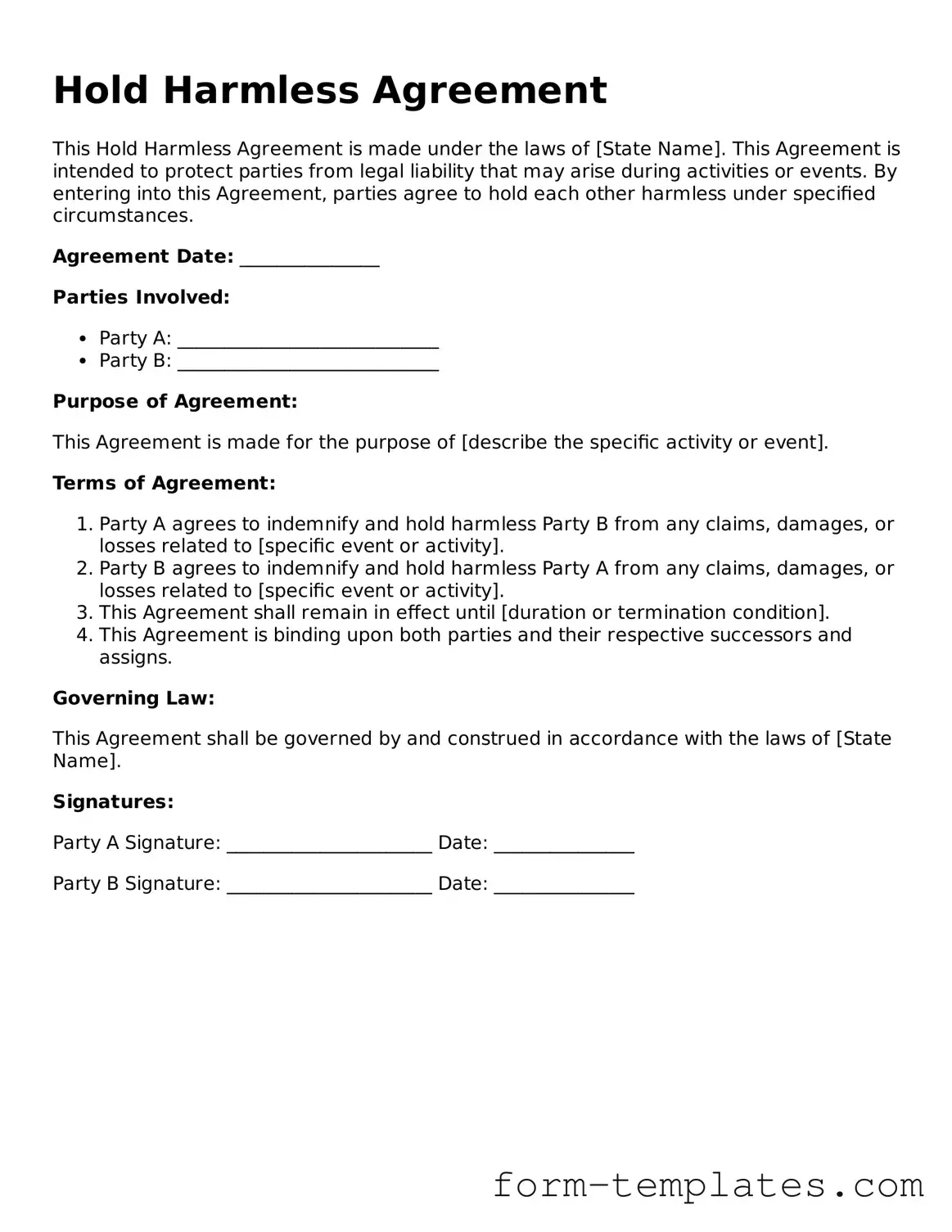Attorney-Approved Hold Harmless Agreement Document
A Hold Harmless Agreement is a legal document that protects one party from liability or claims arising from the actions of another party. This form is often used in various situations, including events, construction projects, and service agreements, to ensure that one party does not hold the other responsible for certain risks. Understanding its purpose and implications is crucial for anyone considering entering into such an agreement.
Ready to protect yourself? Fill out the Hold Harmless Agreement form by clicking the button below.
Open Your Document Now
